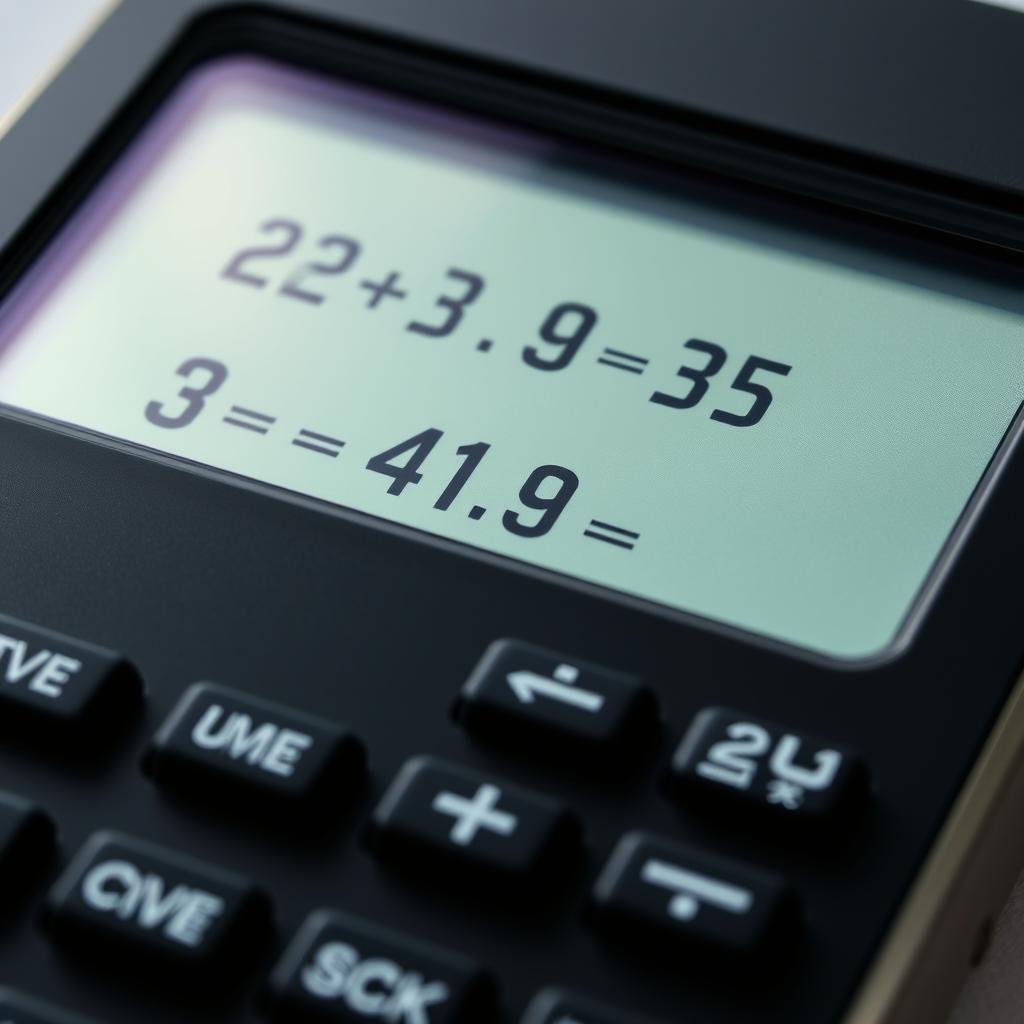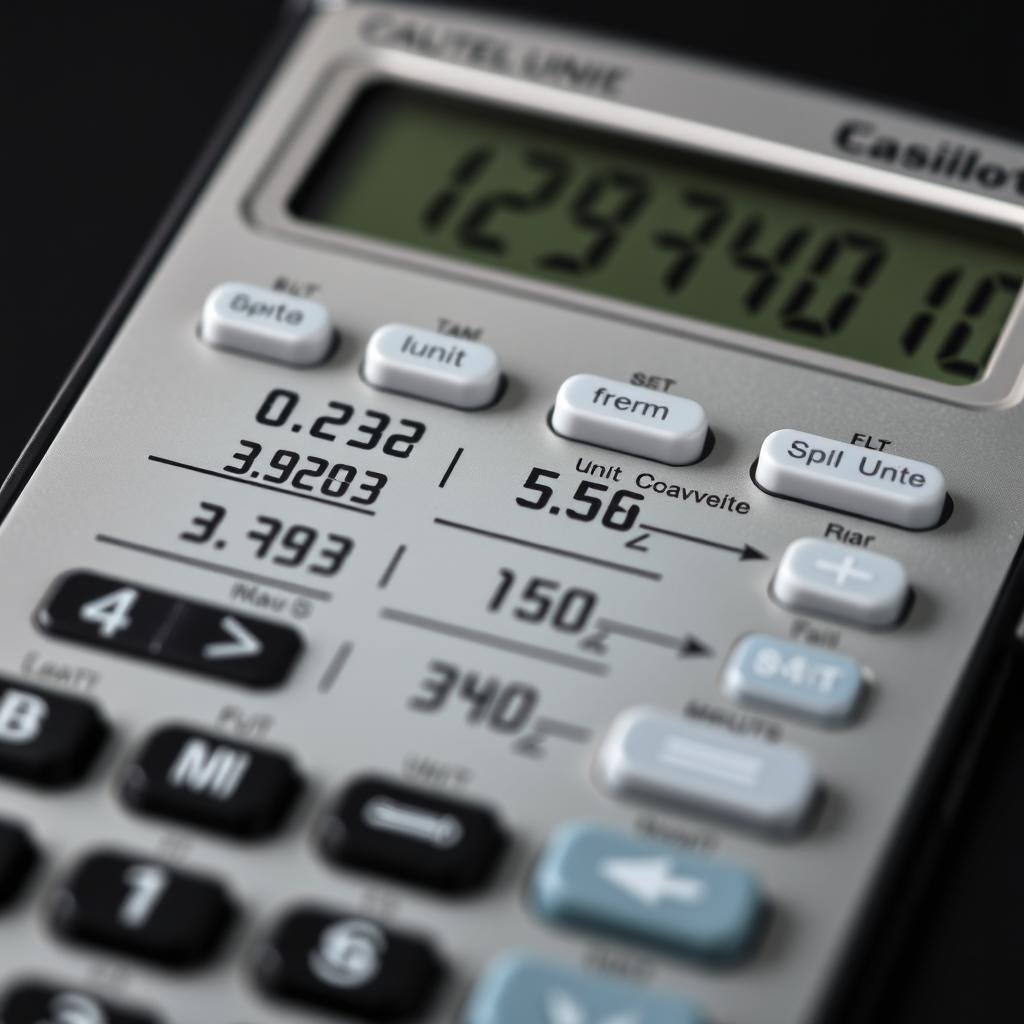Scientific calculators have revolutionized how we solve complex mathematical problems. Unlike basic calculators, these powerful tools offer specialized functions for trigonometry, statistics, algebra, and more. Whether you’re a high school student tackling algebra, a college engineering major, or a professional scientist, understanding scientific calculator capabilities can significantly enhance your problem-solving efficiency.

What Is a Scientific Calculator?
A scientific calculator is a specialized computing device designed to solve mathematical problems beyond basic arithmetic. These calculators feature dedicated keys for scientific notation, logarithms, trigonometric functions, statistical analysis, and more advanced mathematical operations.
Unlike standard calculators, scientific calculators can handle complex equations involving multiple operations while maintaining proper mathematical order of operations. They typically feature a multi-line display that allows you to see both your input and the calculated result simultaneously.
Scientific calculators became essential tools in education and professional fields starting in the 1970s, dramatically reducing the time needed to perform complex calculations that previously required tables, slide rules, or manual computation.

Ready to solve complex equations?
Explore our comprehensive collection of calculator tools designed for students, professionals, and math enthusiasts.
Key Features of Scientific Calculators
Scientific calculators come equipped with numerous specialized functions that set them apart from basic calculators. Understanding these features helps you select the right calculator for your specific needs.

Trigonometric Functions
Scientific calculators include dedicated keys for sine, cosine, tangent, and their inverses. These functions are essential for geometry, physics, engineering, and navigation calculations.

Logarithmic Functions
Log and natural log (ln) functions are crucial for solving exponential equations, calculating compound interest, and working with growth or decay problems in various scientific fields.

Statistical Calculations
Most scientific calculators offer statistical modes for calculating mean, standard deviation, regression analysis, and other data analysis functions needed in research and statistical studies.

Exponents and Roots
Beyond simple square roots, scientific calculators can calculate any root or power, making them invaluable for algebra, calculus, and engineering applications.

Memory Functions
Store and recall values with dedicated memory buttons, allowing for complex multi-step calculations without losing intermediate results.

Fraction Calculations
Convert between decimals and fractions, perform operations with mixed numbers, and simplify fraction results automatically.
Did You Know?
Modern scientific calculators can perform over 100 different mathematical functions, compared to just the four basic operations (addition, subtraction, multiplication, division) found on standard calculators.
Advanced Scientific Calculator Features
Beyond the standard functions, many scientific calculators offer advanced capabilities that can significantly enhance your problem-solving toolkit.
Equation Solver
Some advanced scientific calculators include built-in equation solvers that can find roots of polynomial equations, solve systems of linear equations, and handle other complex mathematical problems.
Unit Conversions
Convert between different units of measurement (metric to imperial, temperature scales, etc.) without manual calculation, saving time and reducing errors.
Programmability
Higher-end scientific calculators allow you to create custom programs or formulas for frequently used calculations, streamlining repetitive tasks.

| Feature | Basic Scientific | Advanced Scientific | Graphing Calculator |
| Trigonometric Functions | Yes | Yes | Yes |
| Statistical Analysis | Basic | Advanced | Comprehensive |
| Equation Solver | No | Yes | Yes |
| Graphing Capability | No | No | Yes |
| Programmability | No | Limited | Extensive |
| Matrix Operations | No | Yes | Yes |
Need help with complex calculations?
Our online scientific calculator includes all these advanced features and more, accessible from any device.
Scientific Calculator vs. Graphing Calculator
While both scientific and graphing calculators handle complex mathematical operations, they serve different purposes and come with distinct advantages.
Scientific Calculator Advantages
- More affordable (typically $10-$30)
- Compact and portable
- Simpler learning curve
- Longer battery life
- Allowed on more standardized tests
- Sufficient for most high school and college courses
Scientific Calculator Limitations
- Cannot visualize functions graphically
- Limited screen space for complex equations
- Less powerful for advanced mathematics
- Fewer programming capabilities
- Limited memory for storing equations
- No capability for visual data representation

“For most high school math courses and introductory college classes, a scientific calculator provides all the functionality needed at a fraction of the cost of a graphing calculator.”
— Dr. Michael Chen, Mathematics Professor
Who Uses Scientific Calculators?
Scientific calculators serve diverse users across educational and professional settings. Understanding who benefits from these tools can help you determine if a scientific calculator meets your specific needs.

Students
From high school algebra to college calculus, scientific calculators are essential for mathematics, physics, chemistry, engineering, and statistics courses. They help students solve complex problems efficiently while reinforcing mathematical concepts.

Engineers
Civil, mechanical, electrical, and other engineers rely on scientific calculators for field calculations, verifying computer results, and solving equations on-site where computers may not be available or practical.

Scientists
Researchers in physics, chemistry, biology, and other scientific fields use scientific calculators for data analysis, converting units, calculating concentrations, and verifying experimental results.
Scientific Calculator for Standardized Tests
Many standardized tests, including the SAT, ACT, and AP exams, allow scientific calculators but restrict graphing calculators. Check the specific calculator policy for your exam to ensure compliance.
How to Choose the Right Scientific Calculator
Selecting the appropriate scientific calculator depends on your specific needs, course requirements, and budget. Consider these factors when making your decision:

Key Selection Factors
- Course Requirements: Check if your class or exam has specific calculator requirements or restrictions.
- Display Type: Single-line vs. multi-line displays; natural textbook display vs. linear input.
- Battery Type: Solar-powered, battery-operated, or dual-powered options.
- Memory Capacity: Consider how many values or formulas you need to store.
- Specialized Functions: Ensure the calculator includes the specific functions needed for your field.
- Durability: Consider build quality for long-term use, especially in field conditions.
Finding the perfect calculator?
Our online scientific calculator offers all the functions you need without the cost of a physical device.
How to Use a Scientific Calculator Effectively
Mastering your scientific calculator can significantly improve your efficiency and accuracy. Here are essential tips for getting the most out of your calculator:
Basic Operations
- Order of Operations: Scientific calculators follow the standard mathematical order of operations (PEMDAS). Use parentheses to control calculation sequence.
- Clearing Entries: Understand the difference between the Clear Entry (CE) key, which removes only the last entry, and the Clear (C) key, which resets the entire calculation.
- Memory Functions: Learn to store intermediate results using the memory keys (M+, M-, MR, MC) to streamline multi-step calculations.
- Degree/Radian Mode: Ensure your calculator is set to the correct angle mode (degrees, radians, or grads) before performing trigonometric calculations.

Advanced Techniques

Statistical Calculations
Enter data points in statistical mode, then use dedicated keys to calculate mean, standard deviation, regression analysis, and other statistical measures without manual computation.

Equation Solving
Use the equation mode to solve polynomial equations, systems of linear equations, and other complex mathematical problems by entering coefficients and letting the calculator find solutions.

Unit Conversions
Convert between different units of measurement (length, area, volume, temperature, etc.) using built-in conversion functions, ensuring accuracy and saving time.
Common Mistakes to Avoid
- Forgetting to clear previous calculations before starting new ones
- Using incorrect angle mode for trigonometric functions
- Misplacing parentheses in complex expressions
- Overlooking the difference between negative numbers and subtraction
- Failing to check if your calculator is in the correct notation mode (scientific, engineering, or normal)
Online Scientific Calculators vs. Physical Devices
With the rise of digital tools, online scientific calculators have become popular alternatives to traditional handheld devices. Each option offers distinct advantages depending on your specific needs.
- Free to use with no purchase required
- Accessible from any device with internet connection
- Regular updates with new features and improvements
- Often include additional reference materials and tutorials
- No risk of battery failure or physical damage
- Typically offer more advanced functions than basic physical calculators
Online Scientific Calculators
- Usable without internet connection or power source
- Allowed in most standardized tests and exams
- Tactile buttons for faster data entry
- No screen distractions from other apps or notifications
- One-time purchase with no subscription fees
- Specialized models available for specific fields
Physical Scientific Calculators

Get the best of both worlds
Our online scientific calculator offers all the functionality of a physical device with the convenience of digital access.
Frequently Asked Questions About Scientific Calculators
What makes a calculator “scientific”?
A scientific calculator is distinguished by its ability to perform complex mathematical operations beyond basic arithmetic. Key features include trigonometric functions, logarithms, exponents, statistical calculations, and scientific notation. These calculators follow the standard order of operations and typically have a multi-line display to show both input and results.
Are scientific calculators allowed on standardized tests?
Most standardized tests, including the SAT, ACT, and many AP exams, allow scientific calculators but may restrict graphing calculators or those with certain advanced features. Always check the specific calculator policy for your exam, as requirements vary. Some tests have specific approved calculator lists or restrict calculators with computer algebra systems (CAS), QWERTY keyboards, or wireless capabilities.
What’s the difference between scientific and graphing calculators?
Scientific calculators focus on performing complex mathematical operations with a compact design and typically single or dual-line display. Graphing calculators include all scientific calculator functions plus the ability to plot and analyze graphs, handle matrices, run programs, and often feature larger screens with higher resolution. Graphing calculators are generally more expensive (-150) compared to scientific calculators (-30).
How do I choose between a physical and online scientific calculator?
Consider your specific needs: If you need a calculator for exams or situations without internet access, a physical calculator is essential. For general use, homework, or when working at a computer, online calculators offer more features at no cost. Many students and professionals use both—a physical calculator for exams and fieldwork, and online calculators for homework and office work.
What scientific calculator functions are most important for high school students?
High school students typically need scientific calculators with trigonometric functions (sin, cos, tan), logarithms (log, ln), exponents, square roots, basic statistics, and fraction capabilities. For algebra and pre-calculus, look for calculators with equation solving capabilities. For physics and chemistry, unit conversion functions are helpful. Most scientific calculators in the -25 range will cover all these functions adequately.
Conclusion: Finding Your Ideal Scientific Calculator
Scientific calculators remain essential tools for students, educators, and professionals in STEM fields. Whether you opt for a physical device or an online calculator, the right tool can significantly enhance your mathematical capabilities and efficiency.
When selecting a scientific calculator, consider your specific needs, course requirements, and how you’ll be using it. For most high school and introductory college courses, a standard scientific calculator provides all the necessary functions at an affordable price. For more advanced courses or professional use, you might benefit from specialized features or even a graphing calculator.
Remember that mastering your calculator’s functions is just as important as having the right device. Take time to learn the various features and shortcuts to maximize efficiency and accuracy in your calculations.
Ready to solve complex equations?
Explore our comprehensive suite of online calculators designed for students, professionals, and math enthusiasts.
